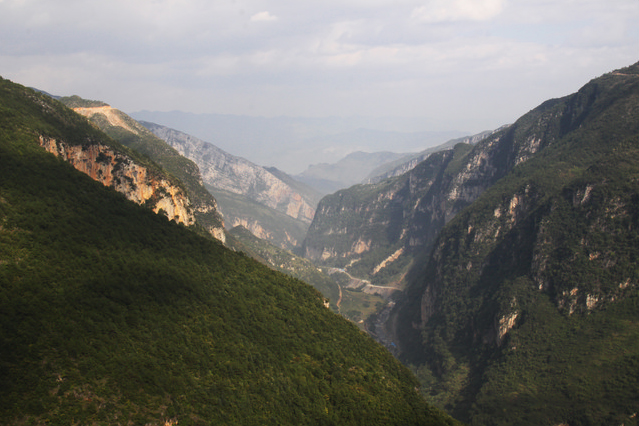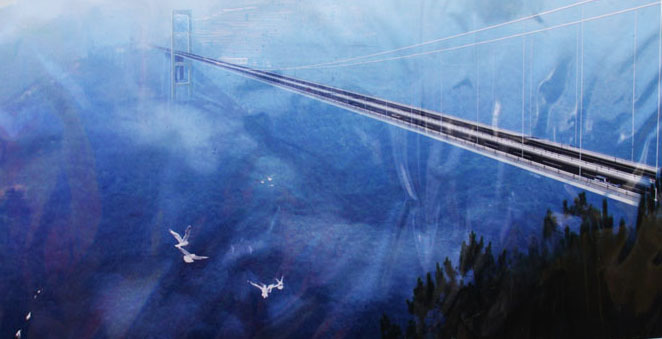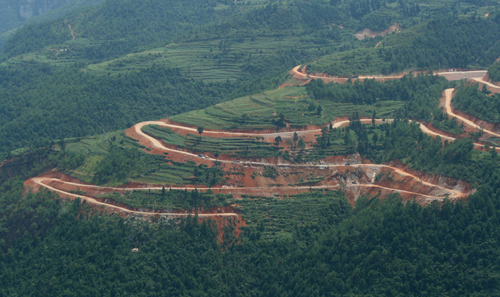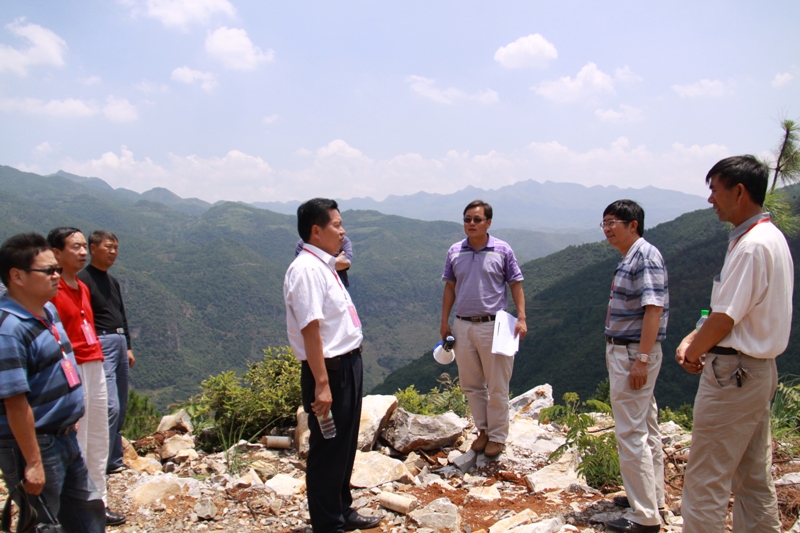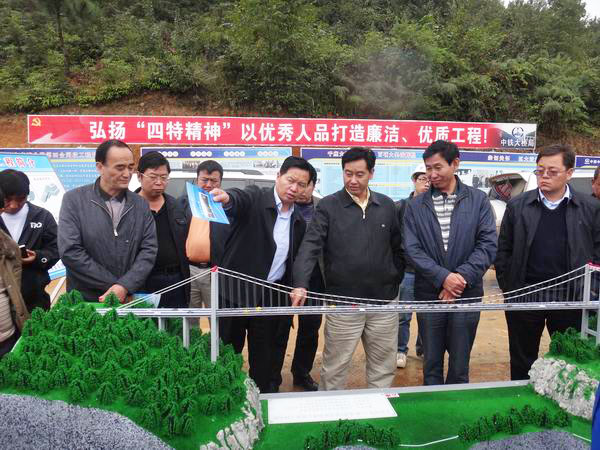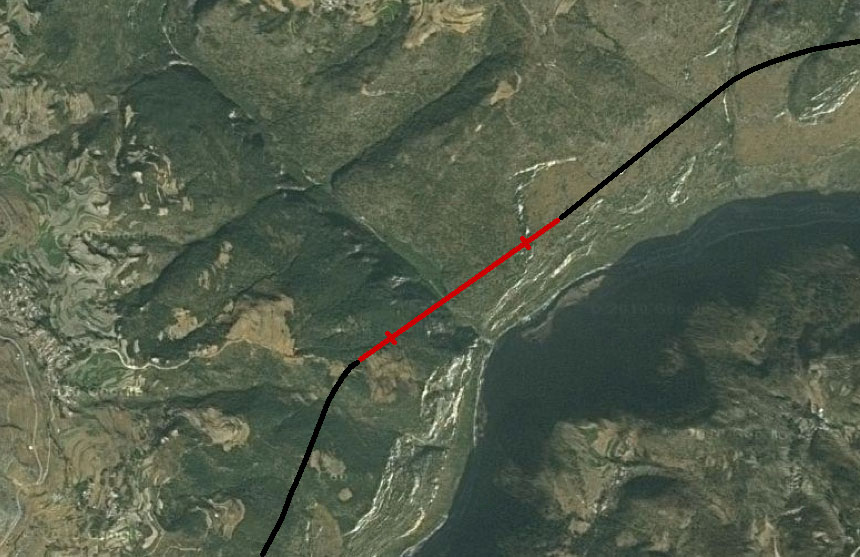Difference between revisions of "Wanglongbao Bridge"
(Created page with '<div style="font-size: 25px; text-align: center;"> Wanglongbao Bridge<br /> 望龙包特大桥<br /> Fa’er Bouyei, Guizhou, China<br /> (476) feet high / (145) meters high<br /…') |
|||
| Line 10: | Line 10: | ||
| − | Wanglongbao is one of 3 giant beam bridges that traverse over or along the deep Beipanjinag River valley | + | Wanglongbao is one of 3 giant beam bridges that traverse over or along the deep Beipanjinag River valley. The long 886 meter bridge has a span configuration of 4x40 +85+160+85 +3x30 meters atop piers as high as 95 meters. |
| − | |||
| − | + | Just a kilometer north of Wanglongbao is the massive Beipanjiang 2013 Bridge with the longest beam span ever attempted on a high level bridge with a distance of 290 meters between piers. Several kilometers south of Wanglongbao is the towering Laoyingyan beam bridge with 2 spans of 160 meters. The famous 2011 Beipanjiang Railway Bridge crosses under the highway just south of the Wanglongbao Bridge and makes for easy access for rail fans stopping to see the 275 meter high arch bridge. There are few places in the world where there are 4 high bridges in such close proximity to each other. | |
<div style="text-align: center; font-size: 25px;"> | <div style="text-align: center; font-size: 25px;"> | ||
| − | [[File: | + | [[File:WanglongbaoElevComingSoon.jpg|750px|center]]<br /> |
| − | + | Wanglongbao Bridge Elevation<br /> | |
</div> | </div> | ||
Revision as of 07:10, 10 June 2013
Wanglongbao Bridge
望龙包特大桥
Fa’er Bouyei, Guizhou, China
(476) feet high / (145) meters high
525 foot span / 160 meter span
2013
Wanglongbao is one of 3 giant beam bridges that traverse over or along the deep Beipanjinag River valley. The long 886 meter bridge has a span configuration of 4x40 +85+160+85 +3x30 meters atop piers as high as 95 meters.
Just a kilometer north of Wanglongbao is the massive Beipanjiang 2013 Bridge with the longest beam span ever attempted on a high level bridge with a distance of 290 meters between piers. Several kilometers south of Wanglongbao is the towering Laoyingyan beam bridge with 2 spans of 160 meters. The famous 2011 Beipanjiang Railway Bridge crosses under the highway just south of the Wanglongbao Bridge and makes for easy access for rail fans stopping to see the 275 meter high arch bridge. There are few places in the world where there are 4 high bridges in such close proximity to each other.
The official photo and computer rendition above shows how the bridge would look if it crossed over the Gexiang River gorge. The bridge will actually cross the above view 90 degrees adjacent by coming straight from the left side slope and directly towards you. The Puli River is a tributary of the Gexiang and is hidden below the view of the camera.
A clean view of the Gexiang River gorge. The cameraman is standing on the approximate location of the Puli Bridge west tower while the east tower will be on the green slope on the left side. If the Gexiang River were to be crossed by a suspension bridge it would likely be more then 500 meters high!
Another early computer rendering of the Puli Bridge.
In 2011 a series of construction roads were created to access the foundation of one of the bridge towers. Construction of the bridge began in 2012.
A group of Yunnan engineers visit the east slope of the bridge site in 2011.
A group of Chinese engineers discuss the bridge design. The simplified terrain below the model does not show the full height of the V-shaped valley.
Puli Bridge satellite image with bridge and highway drawn in. Note how the bridge crosses the Puli River just before it empties into the Gexiang River that flows off to the right. The Puli River likely tumbles down a waterfall-like cascade for the last 100 meters of descent before it blends into the Gexiang River.
